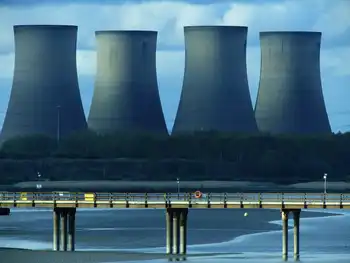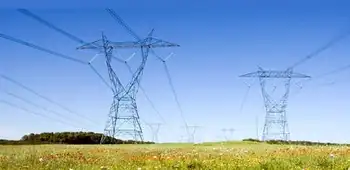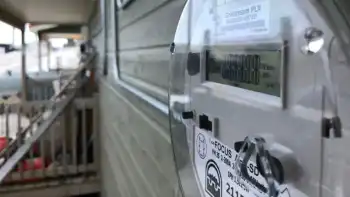Anti-nuclear mood melts TepcoÂ’s hopes of normality
By Energy
Substation Relay Protection Training
Our customized live online or in‑person group training can be delivered to your staff at your location.

- Live Online
- 12 hours Instructor-led
- Group Training Available
“The sooner we get back to normal, the better,” Toshio Nishizawa, Tepco’s president, recently told the Financial Times. “Whatever happens, our core business will not change.”
Before the disaster, Tepco was a pillar of JapanÂ’s business establishment, with a virtual monopoly over generating and distributing the electricity used by the worldÂ’s biggest urban conglomeration. Its position brought it annual revenues exceeding Y5,000bn $65bn and net profit of Y133.8bn and matchless political power.
Today, Tepco is a ward of the state – effectively bankrupted by liability claims but kept in business by a rescue scheme that shifts to taxpayers the up-front costs of cleaning up Fukushima prefecture and compensating victims of the catastrophe, including more than 100,000 people who have been forced from their homes.
With net assets of Y2,516bn at the end of 2009/10 financial year, Tepco has to repay these costs – estimated at Y4,700bn but likely to rise – over a still unspecified number of years, using profits that would otherwise have gone to shareholders, who themselves have been stripped of further dividend payments and hit by an 85 per cent fall in the value of their holdings since the disaster.
Tepco is also saddled with Y9,000bn of gross debt and while the banks have agreed to roll over loans at pre-disaster interest rates, so far they have resisted pressure to write off any debts entirely.
Under Mr Nishizawa’s optimistic scenario, Tepco would stabilise the still-leaking power station – something it hopes to accomplish in the next few months – then turn its attention to generating the cash it needs to regain its independence.
It is lobbying for electricity rate increases to help it along, while a restructuring plan will see it cut 15 per cent of its workforce and sell Y700bn of assets. This plan received final approval from regulators earlier this month, allowing it to collect Y890bn released by a specially established nuclear liability fund.
Yet the Fukushima disaster has unleashed forces that could make restoring the status quo impossible, as Japan reconsiders its past embrace of nuclear power and the anti-competitive privileges bestowed on its nine regional electric utilities.
“Going back to business as usual is out of the question,” says a government official involved in administering the Tepco bail-out.
Unsurprisingly, the disaster has turned a majority of Japanese against nuclear power that, before the tsunami, generated about 30 per cent of the countryÂ’s electricity.
TokyoÂ’s policy response has reflected the anti-nuclear mood, but plenty of ambiguity remains. A pre-disaster target of increasing the proportion of JapanÂ’s electricity generated by nuclear power to 50 per cent by 2030 has been scrapped more support for solar, wind and other renewable-energy technologies has been promised and an atomic plant near multiple earthquake faults in central Japan has been forced to close for safety upgrades.
Meanwhile, a debate about restructuring the electric power industry has begun.
One proposal supported by liberal reformers is to separate the generation and distribution businesses of Tepco and possibly other utilities, opening the sector to more competition. This month Yukio Edano, industry minister, said breaking up Tepco was “a fully conceivable option”.
The Fukushima disaster has also hampered Japanese plans to export more nuclear technology. Although the ruined reactors were nearly 40 years old and were designed by General Electric, a US group, the reputation of JapanÂ’s nuclear industry as a whole has suffered. Since the disaster, a tentative deal by Toshiba to build a plant in Turkey has come close to unravelling because Tepco, which was to have helped operate the plant, pulled out and the Japanese government has been unable to sign off on low-interest loans.
Domestically, even if Japan stops building new atomic plants, as seems likely, Yoshihiko Noda, prime minister since August, says he wants existing ones to keep running, provided they pass government-mandated safety “stress tests”.
In the short term, the biggest policy threat to the nuclear industry is local. Since the disaster, Japanese mayors and governors have been blocking utilities from restarting reactors that have shut down for routine safety inspections, and presently only a handful of reactors are producing power. Unless Mr Noda can change local leadersÂ’ minds, the rest will be offline by next May.
At Tepco, only two of the 17 atomic reactors it operated before the tsunami are working, a situation that pushed its costs up by Y210bn in the six months to September 30. This month the utility projected a Y600bn net loss for the year to March 2012, which would bring its losses since the disaster to Y1,847bn. “Normal” looks a long way off.











